Driving in Korea as a tourist can be a fun and convenient way to explore the country. The roads and highways are well-maintained and easy to navigate, and there are many beautiful destinations to visit by car.
Additionally, driving in Korea can give you the freedom and flexibility to explore the country at your own pace, and see things that you might not be able to see using public transportation.

A short overview of driving in Korea
If you plan on driving in Korea as a tourist, there are a few things you should know. First, you will need to have a valid driver’s license from your home country. If your license is not in Korean or English, you will need to obtain an International Driving Permit (IDP) before you can drive in South Korea.
Once you have a valid license, you should familiarize yourself with the local traffic laws. In South Korea, traffic flows on the right-hand side of the road, and drivers must always wear seat belts and keep their headlights on at all times. Speed limits are strictly enforced, and using a cellphone while driving is prohibited.
The roads and highways in South Korea can be busy and crowded, especially in urban areas. It’s important to stay alert and watch for other vehicles, pedestrians, and bicycles. Additionally, you should be prepared to navigate using maps or a GPS, as roads and addresses can be difficult to decipher for those who are not familiar with the local language.
Short checklist – this is what you need to rent a car and drive in Korea:
- You must be at least 21 years old
- Local driver’s license or valid International Driving Permit (order before traveling)
- Passport for identification
- Credit card
Renting a car in South Korea
Renting a car in South Korea is a convenient and cost-effective way to explore the country. There are many car rental companies to choose from, including international brands such as Hertz, Avis, and Budget, as well as local companies such as Lotte Rent-a-Car (we used them in both Jeju and during our Korea road trip) and Seoul Rent-a-Car. Most rental car companies have branches at airports and major cities, and some also offer pick-up and drop-off services at hotels and other locations.
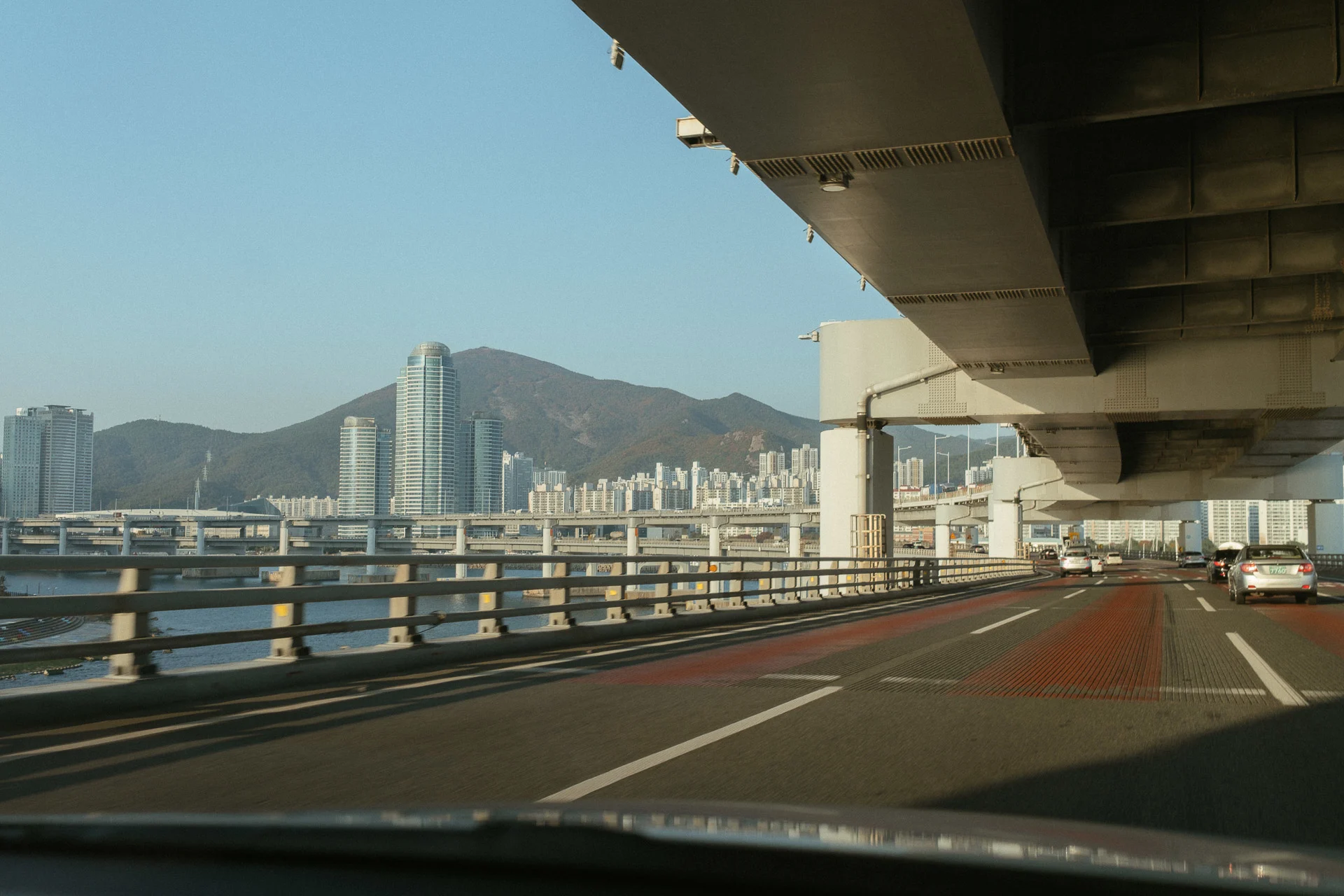
To rent a car in Korea, you will need to be at least 21 years old and have a valid driver’s license from your home country. If your license is not in Korean or English, you will also need to obtain an International Driving Permit (IDP). Most rental car companies will also require a valid credit card and proof of insurance.
Once you have rented a car, you will need to familiarize yourself with the local traffic laws and customs.
Lotte Rent-a-Car
If you’re looking to rent a car from Lotte Rent-a-Car, there are a few requirements you’ll need to meet. You must be at least 21 years old and have a valid driver’s license from your home country. If the license is not in Korean or English, you’ll also need an International Driving Permit (IDP), plus a valid credit card and proof of insurance in some cases.
Lotte Rent-a-Car is a popular option among travelers to South Korea. They have an extensive selection of vehicles, additional services like unlimited mileage, roadside assistance and more – all available with great discounts when you sign up on their website!
Is it safe to drive in Korea?
Driving in Korea is generally a safe experience, as the roads are well maintained and lit and the country has a lower rate of traffic fatalities than other developed countries. That said, there are still some hazards to keep an eye out for. Urban areas tend to be heavily congested with traffic, while rural roads can be narrow and winding. Additionally, cultural differences in driving styles may require some getting used to – like the frequency of horn use by Korean drivers.
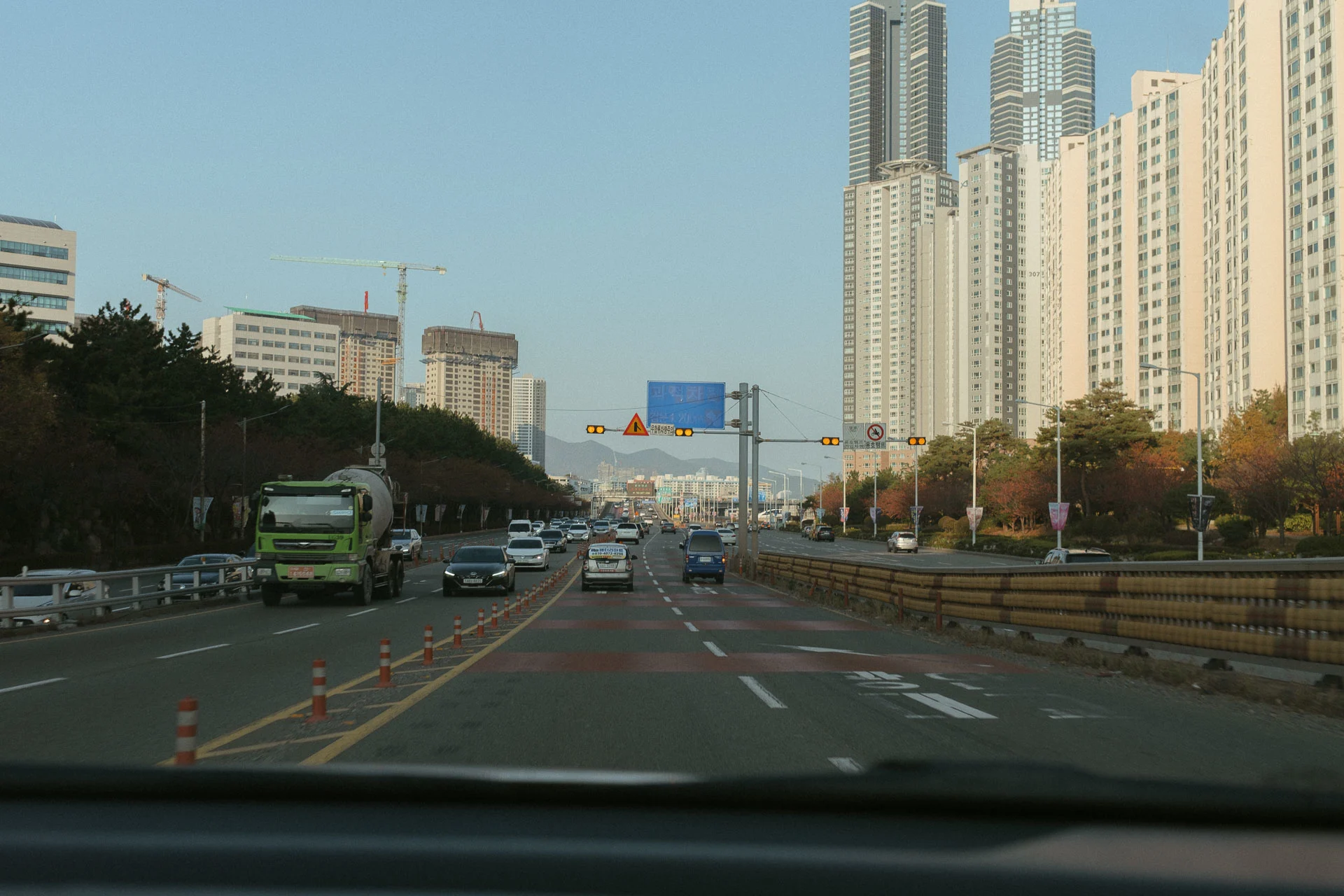
To stay safe on the roads in Korea, it’s important to abide by local traffic laws and remain alert while driving. Avoid distractions as well as fatigue and make sure you’re buckled up and have your headlights turned on. It’s also wise to arm yourself with a map or GPS navigation device, plus become familiar with any highways you may be traveling before setting out. All in all, a little preparation and caution can make for a safe and enjoyable driving experience in Korea.
What side do you drive on in Korea
In South Korea, cars are driven on the right side of the road and pedestrians should walk on the left side facing oncoming traffic. This is the opposite of countries such as the United Kingdom and Australia, where traffic flows on the left-hand side of the road.
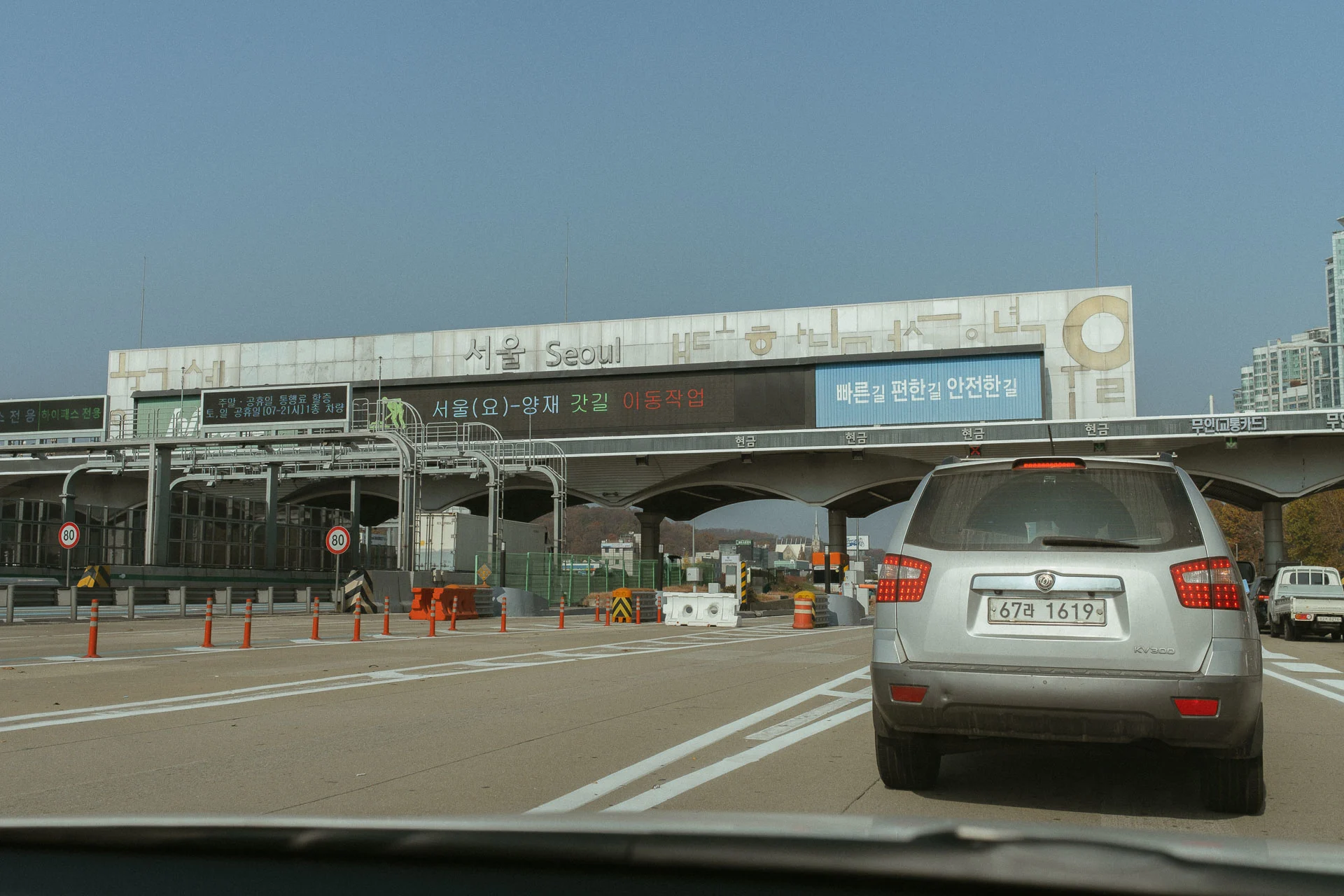
How are distances measured in Korea?
When driving in Korea, you’ll come across distances that are measured in kilometers on road signs, maps and GPS navigation systems. For instance, speed limits on highways are usually expressed in kilometers per hour and the distance between cities is often tallied up in kilometers.
Speed limits for driving in South Korea:
Expressways – From 100-120 km/hr
Open roads – 80 km/hr
City – From 60-80 km/hr
There are lots of speed cameras in Korea and the apps below will always warn you about them. Make sure you follow the speed limits.
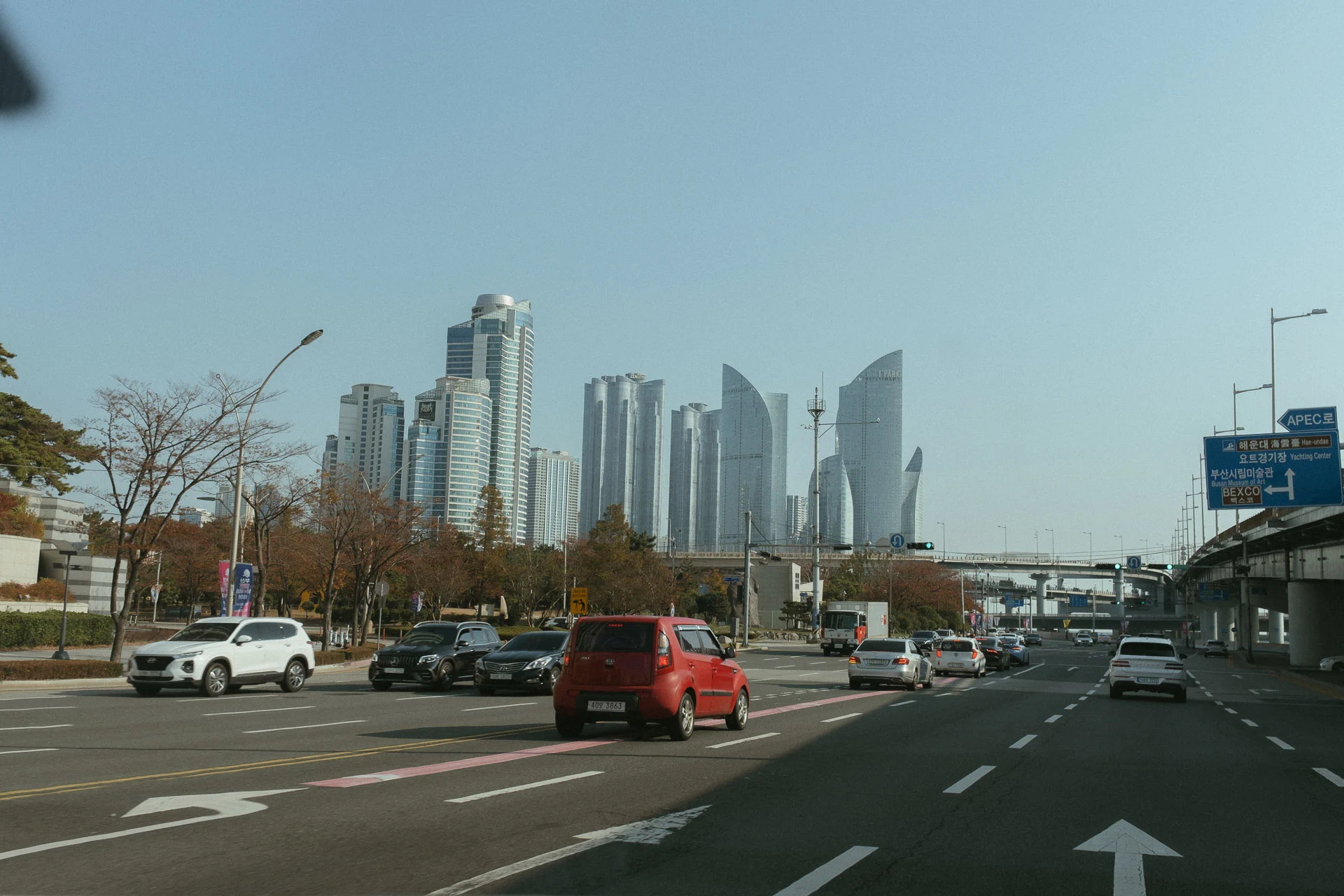
There are plenty of useful apps for navigating in South Korea, including both online and offline maps. Some popular apps for navigation in South Korea include:
KakaoMap: An offline navigation app that provides detailed maps of South Korea, including road maps, public transportation maps, and location-based services. It also offers real-time traffic information and turn-by-turn navigation.
Naver Map: Detailed maps of South Korea, including 3D maps and satellite images. The app also offers real-time traffic information and location-based services.
You could also ask the car rental company to rent a GPS from them, but I find it easier navigating with a phone. If you’ll have your phone, then make sure you ask them to lend you a phone stand.
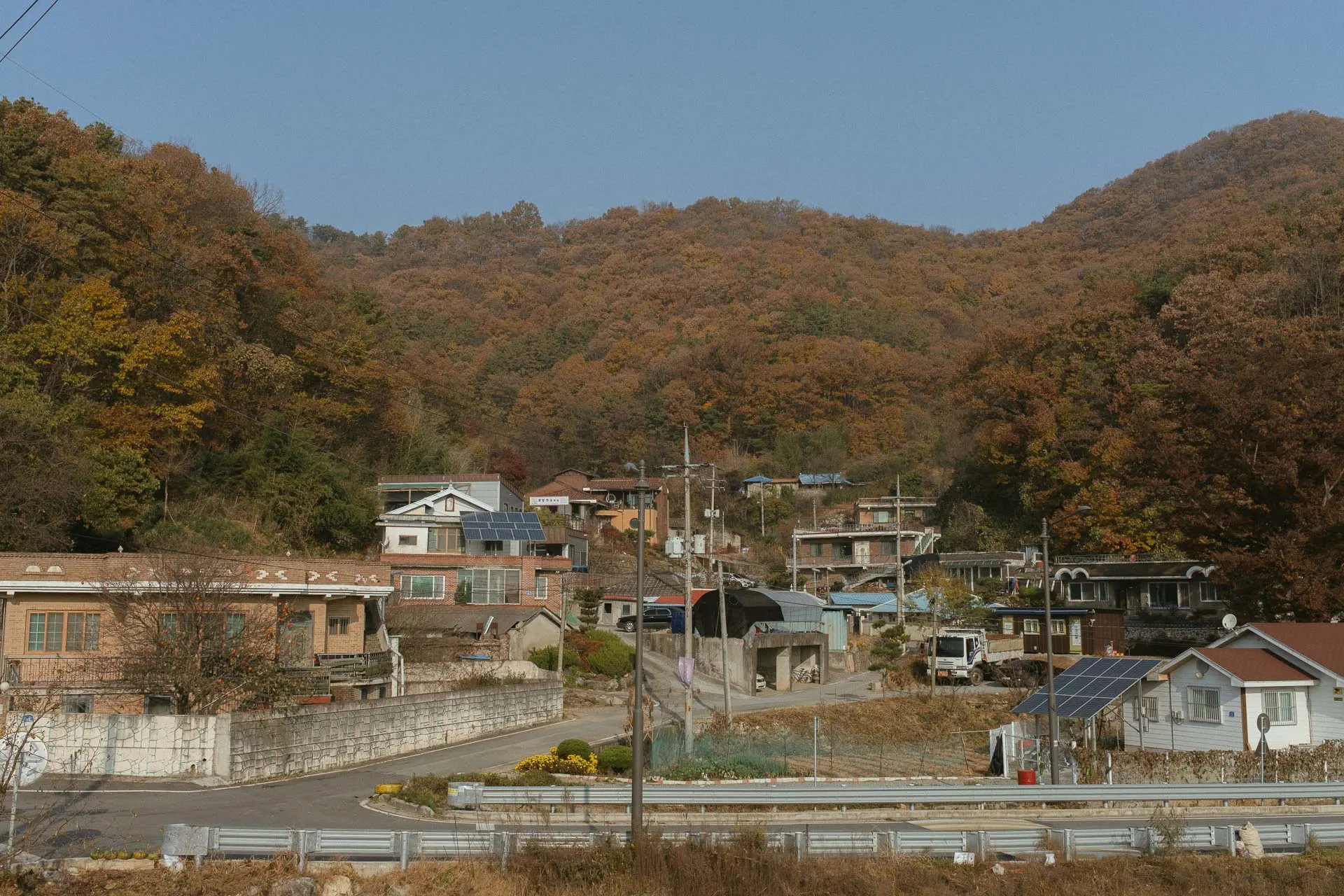
How much does it cost to drive in South Korea?
The cost of driving in any country will depend on a number of factors, such as the cost of fuel, tolls, and any fees associated with using the roadways. It will also depend on the type and size of the vehicle you are driving, as well as how far you plan to travel.
Here is how much we spent on our 6 day driving in Korea road trip, driving almost through the entire country:
Rental car – For a cheap car option (new K3) we paid just below 400,000 for 6 days. This was with the 35% member discount on Lotte car rental. In Jeju we paid 233,000 for 5 days for the New Ray (also with the 35% member discount). The price excluded extra insurance since we have our own.
Gas – Full tank was always around 65,000 KRW in autumn 2022.
Tolls – Tolls will depend on where you’re driving, but they weren’t that bad. Most of the time they cost 1,800 and the highest around 14,500 KRW for a larger distance.
Parking – We had parking included in all the stays we booked, but in the cities we generally paid around 2,000 KRW per hour.
Toll roads in South Korea
In South Korea, some expressways and highways require you to pay tolls that go towards the construction and maintenance of the roads. The amount varies based on how far you’re travelling and what type of vehicle you use. If you’re driving an electric car or a motorcycle, there are discounts available so keep an eye out for those.
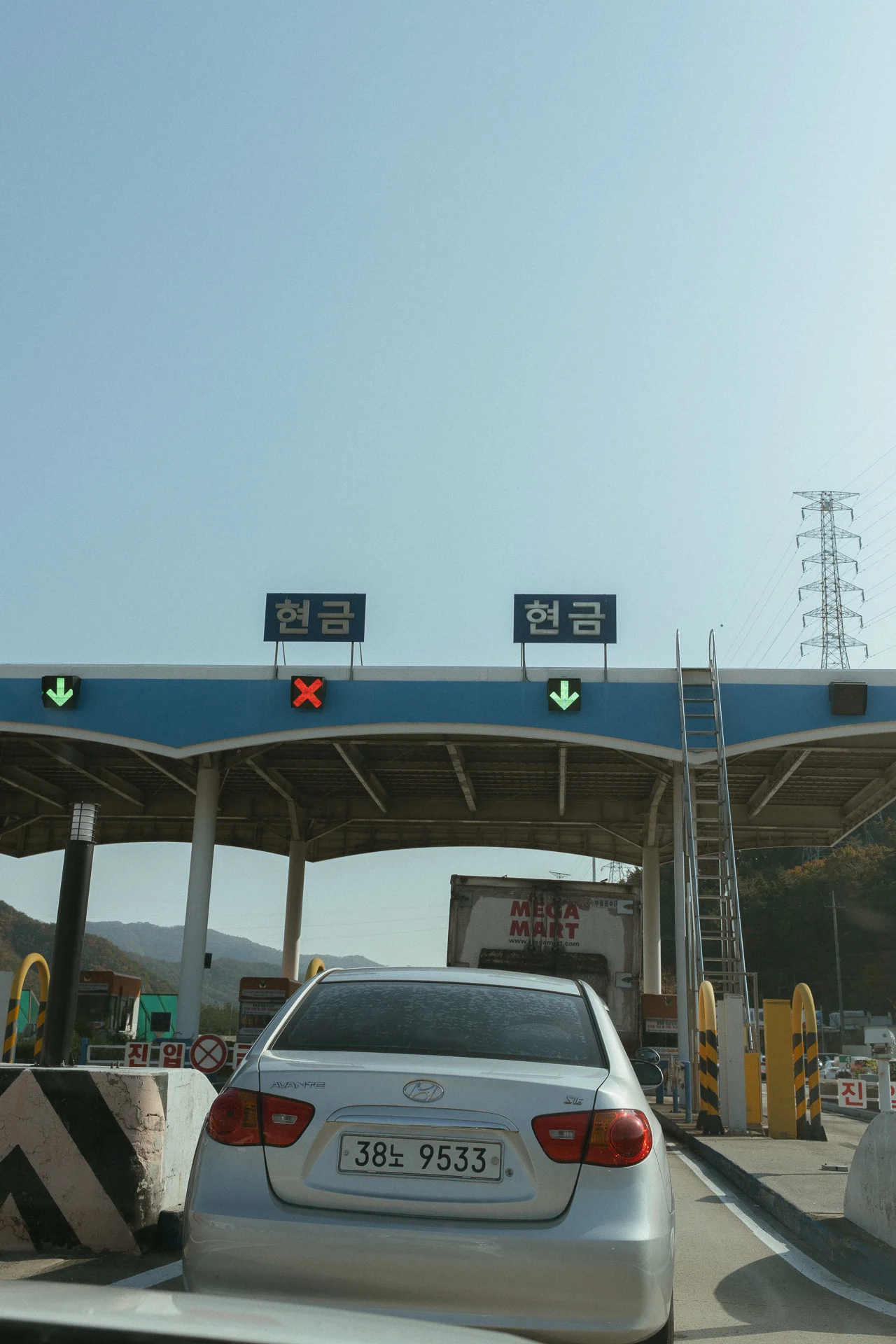
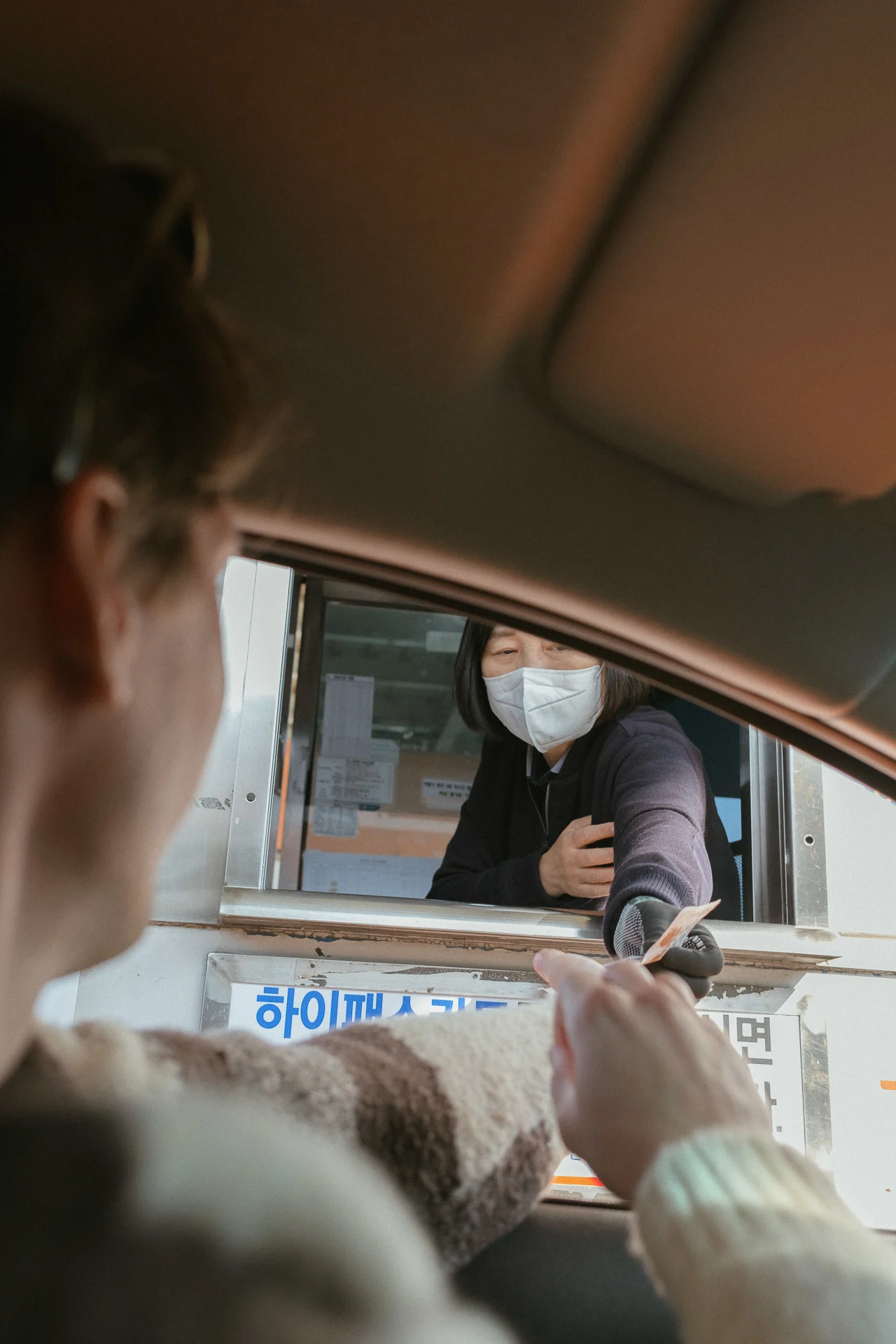
Paying for toll roads when driving in Korea
Tolls for expressways can be paid using cash, credit cards, or a Hi-Pass card. We didn’t have a Hi-Pass card and opted to pay with cash most of the time. Some toll gates are manned and some unmanned, so make sure you can always pay with cash or credit card.
Approaching the toll gate as a foreigner can be very stressful. In the 6 days we traveled around Korea we never clearly recognized the cash lane, but we somehow made it work. The only thing you need to try and avoid is a blue lane or a big orange arch.
Slow down before choosing the right toll road lane and keep an eye out for signage referencing 현금. This means “cash” in Korean and it’s where you need to place yourself if you don’t have a Hi-Pass card. Memorize this word!
Recognizing Hi-Pass Lanes
The Hi-Pass lane is often clearly marked with blue signage at many entry and exit gates. These lanes are for vehicles with a Hi-Pass OBU (onboard unit) and Hi-Pass card. Unfortunately the blue marking isn’t always there, but don’t panic if this happens. Just remember the name of the passage and you’ll be able to pay it at the next toll gate.
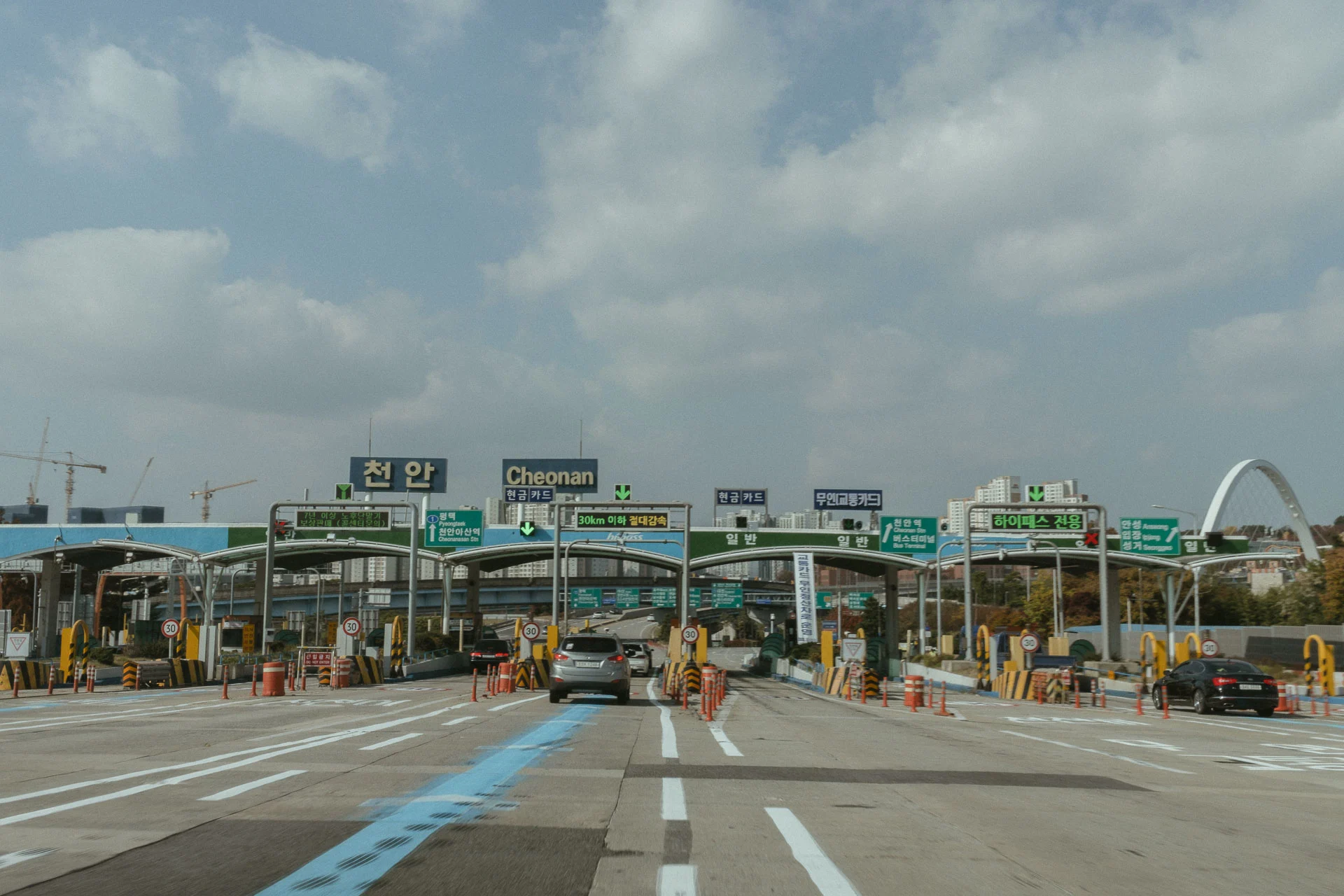
If you lose or don’t get the Hi-Pass ticket
This happened to us twice during the 6 day road trip. The ticket wouldn’t come out at all and we panicked not knowing what to do. At another gate we weren’t able to pay with any of our cards. We still don’t know why, but a lady came to help us and we sorted it out with cash on the spot. When we didn’t get a ticket, we just remembered the place and told it to the lady when we had to pay. She looked up the car in the system and charged us accordingly, no extra. Some people say an extra fee may occur, but I think that doesn’t happen often.
Whatever you do, don’t panic. Once you roll down your window and they see a foreigner, they will gladly help you. Have Papago at the ready as well if you need to explain something, not many of the toll workers speak English, but they are happy to communicate with apps.
Parking in South Korea
In Korea, parking regulations vary depending on the city and location. In general, it is common for there to be designated parking areas, and it is important to follow the posted regulations to avoid getting a ticket or having your vehicle towed.
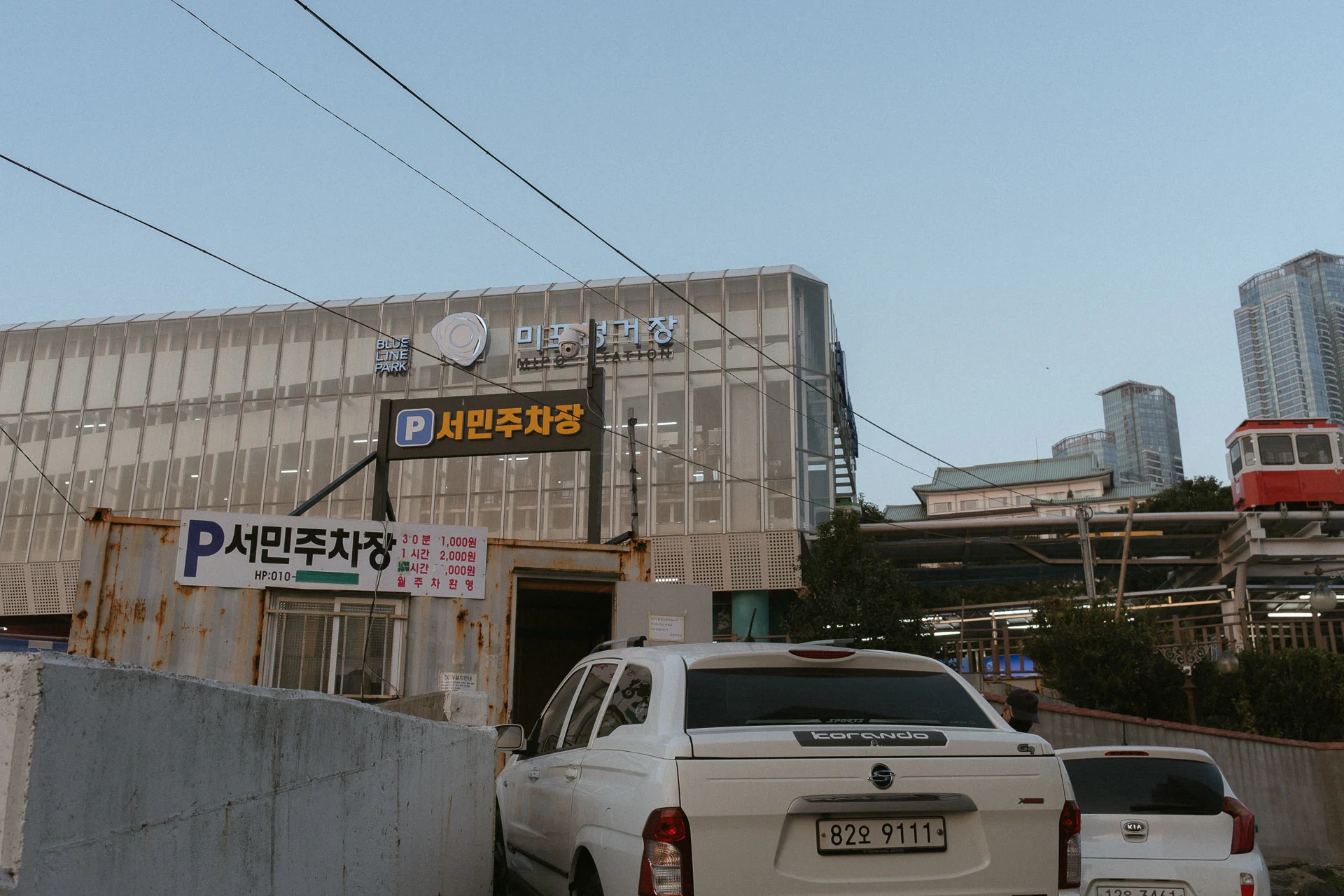
In some cities, there are also parking lots and garages where you can park for a fee. Some areas may also have time limits for parking, so it is important to be aware of any restrictions in the area where you are parking.
Just because it looks like there is space to park, don’t do it. In Busan for example there is CCTV that marks a parked car and if you stand there for more than 7 minutes you’ll get a ticket sent to the rental company. So try to always park where it clearly says it’s a parking spot.
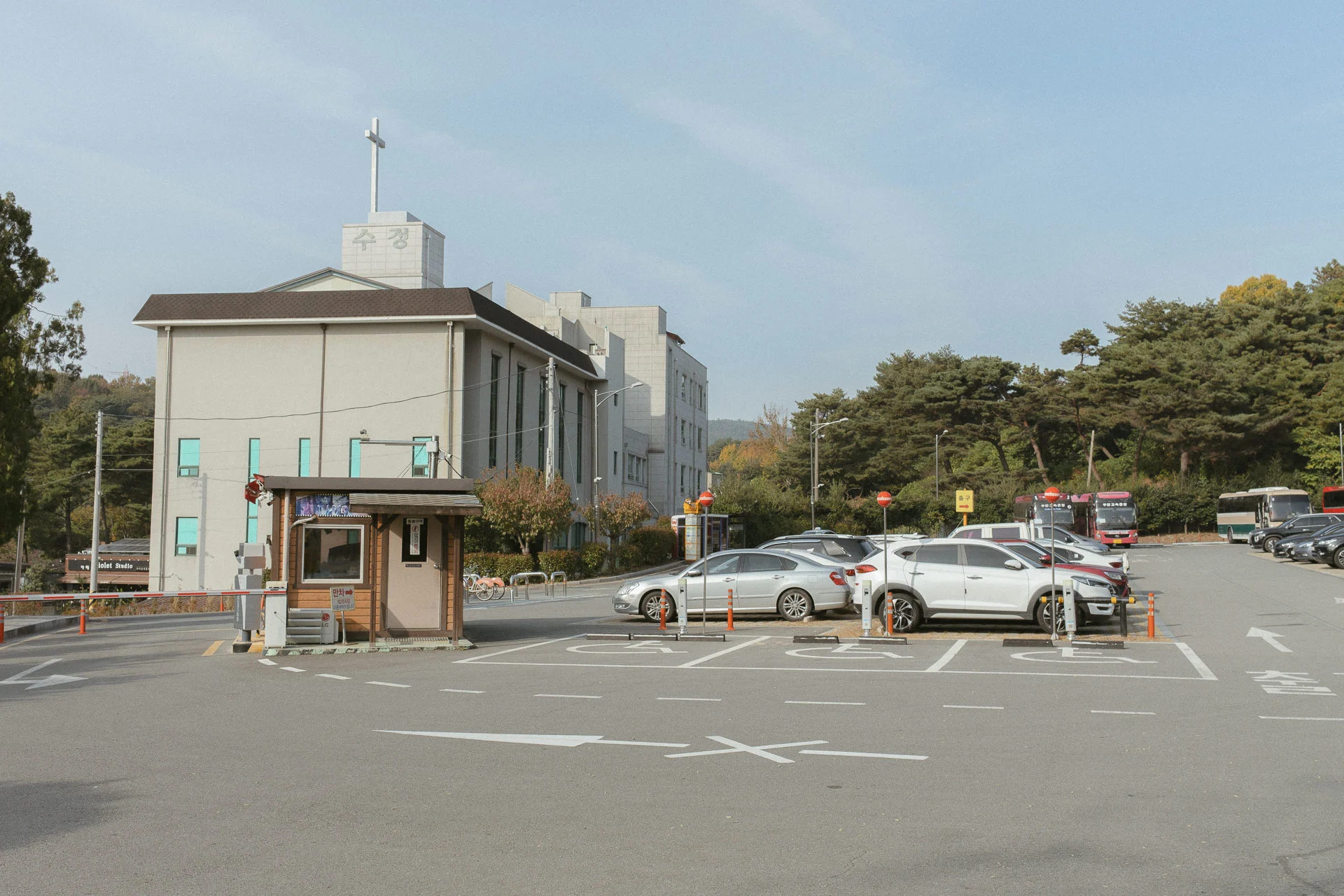
Gas Stations In South Korea
Gas stations are plentiful in Korea and very easy to use. Most of the time the attendant will come to your window, fill up your car full or for as much as you ask them to, and you’ll pay them without even needing to exit your vehicle.
Turning left in Korea
Most of the time you are not allowed to turn left on green lights when driving in Korea. If you see 4 signal lights (traditionally there are three), you will need to wait for a green arrow to turn left.
There is an exception to this when you see see a blue sign that says 비보호 with a left arrow on it. This means you can turn left on the green signal.
The easiest way to spot the difference is if there are 4 or 3 lights. If there are 4 you will most likely have to wait for the 4th one with the arrow to shine.
Turning right in Korea
Similar to the US, you are allowed to turn right on red lights when driving in Korea. Just be careful there aren’t pedestrians or cyclists crossing the road at the same time.
Hazard lights and honking
We were surprised just how much honking and hazard lights are being used in Korea. Except here they could either mean frustration or even something positive. You’ll get used to this after just a day on the road.
Hazard lights in Korea could mean a lot of different things:
- Thank you
- Sorry
- Brake, the traffic is slow/standing
- Emergency vehicle moving ahead
Drinking and driving in Korea
Driving under the influence of alcohol is a serious offense in South Korea, with hefty penalties for those who break the law. The legal blood alcohol limit here is 0.05%, less than many other countries, and if you’re caught driving with a higher level than this, you can expect fines, imprisonment or even loss of your driver’s license. You may also be held financially and criminally responsible for any injuries or damage caused by an accident if you are found to have been drinking at the time.
It’s worth noting that the rules apply not just to alcohol but also to any substances that could impair your ability behind the wheel – drugs, prescription medications and certain over-the-counter cold and allergy medicines are all included in this. So if there’s anything that could affect your judgement while driving, it’s best to avoid taking the risk by either abstaining from driving completely or making sure there’s a designated driver in place.
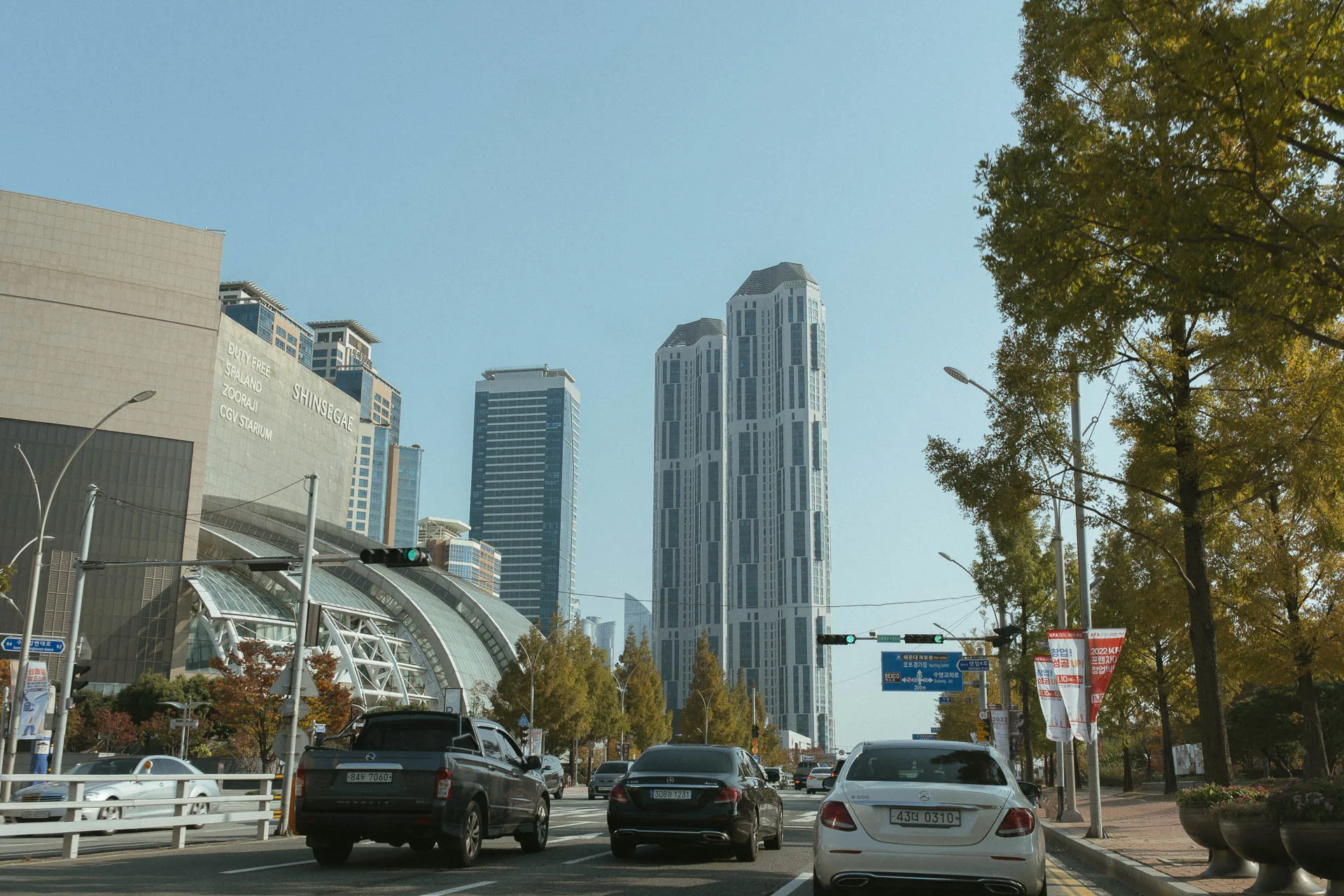
In short: driving and drinking don’t mix in South Korea – make sure you don’t consume any substances that could impair your judgement or reaction time behind the wheel before getting on the road, and plan ahead for a safe way home if you do intend to drink.
Looking for ideas for a road trip in South Korea?
Jeju road trip
A Jeju road trip is a great way to discover all that this South Korean paradise has to offer. With its stunning landscapes, breathtaking beaches, and unique culture, you can enjoy a truly memorable adventure here. Explore the island’s attractions by car, such as the Jeju Folklore & Natural History Museum, the O’sulloc Tea Museum and the Hallasan National Park.
Savor local delicacies like black pork and haenyeo seafood. Shop in vibrant markets or relax on beautiful beaches – no matter if you’re travelling solo or with family and friends, a Jeju road trip is an amazing experience!

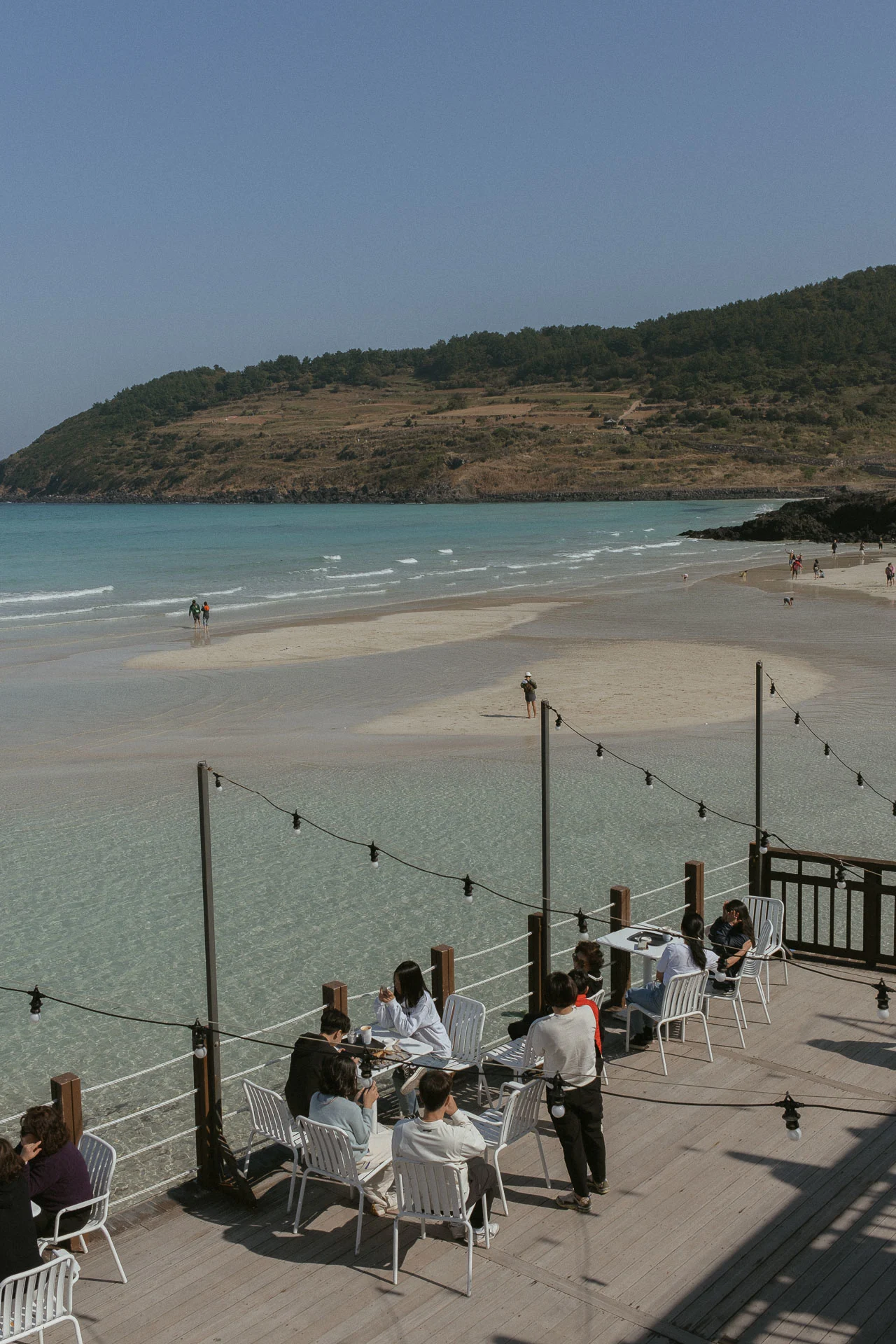

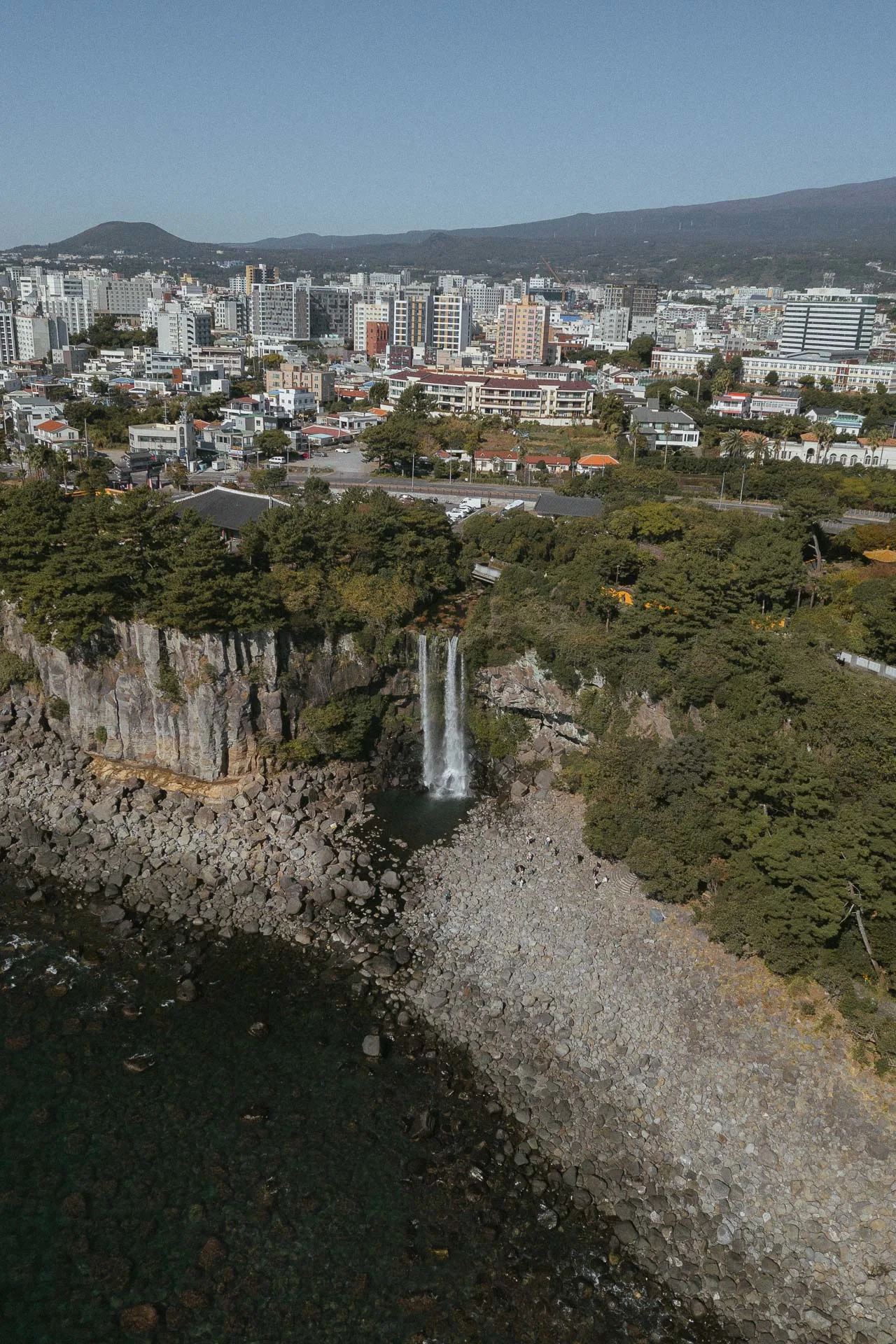
Autumn destinations in South Korea
Autumn in South Korea is a season of beauty and abundance. The skies are clear, the temperatures mild, and the trees are adorned with incredible colors of red, orange and yellow. It’s as if nature has created its own beautiful masterpiece – just look at that carpet of leaves!
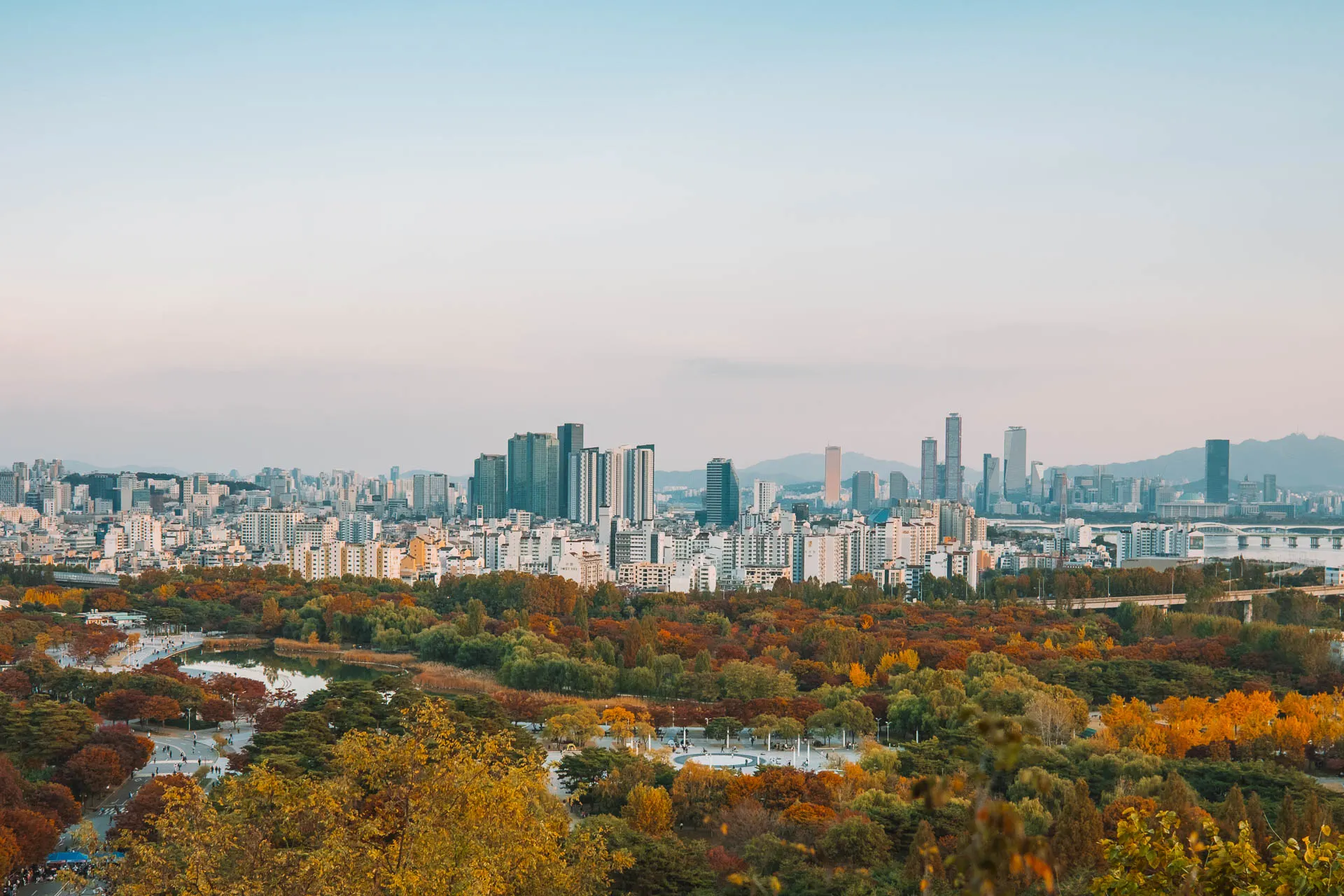
Take advantage of the crisp air by going out for walks or enjoying some outdoor activities. Enjoy seasonal produce such as chestnuts, pumpkin and persimmons. Or take a trip to one of the picturesque locations around the country to view the autumn foliage – Naejangsan National Park, Seoraksan National Park and Jeju Island are great places to start. There’s also plenty to see in the cities; Gyeongbokgung Palace, Namsan Park in Seoul and Haeundae Beach in Busan all have unique attractions you can enjoy during this season. And don’t forget cultural sites like Bulguksa Temple and Gyeongju National Museum – surely worth a visit!
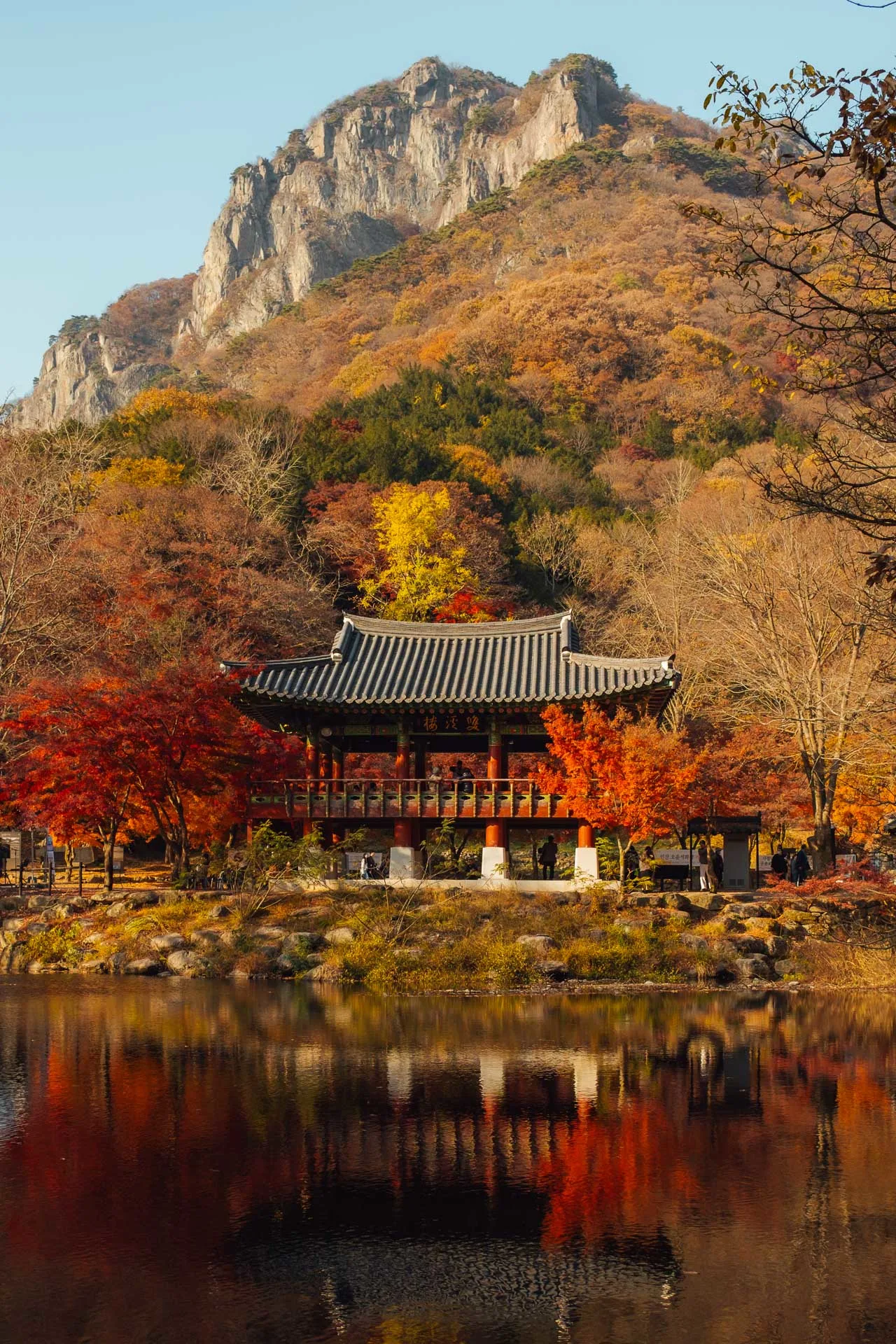
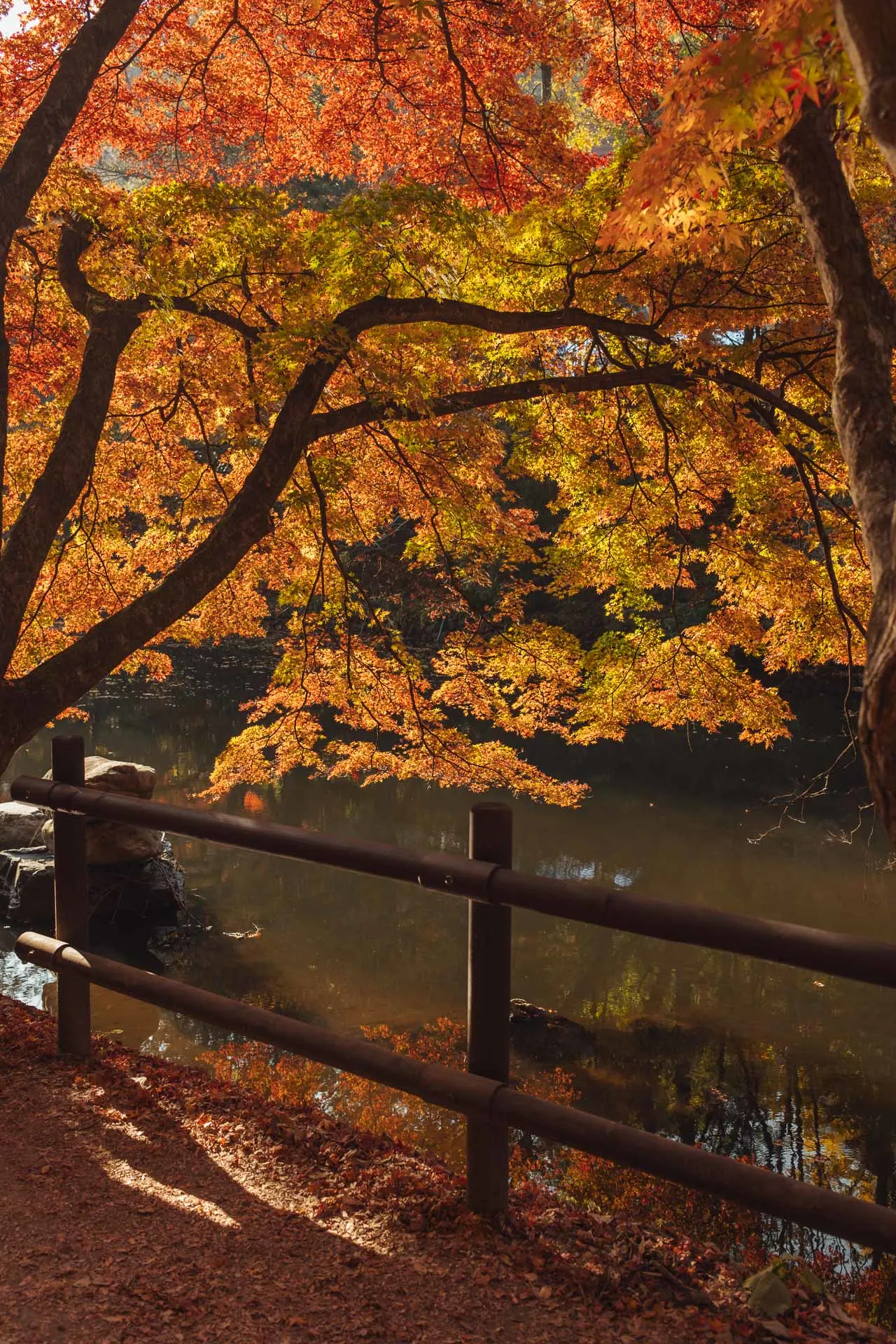
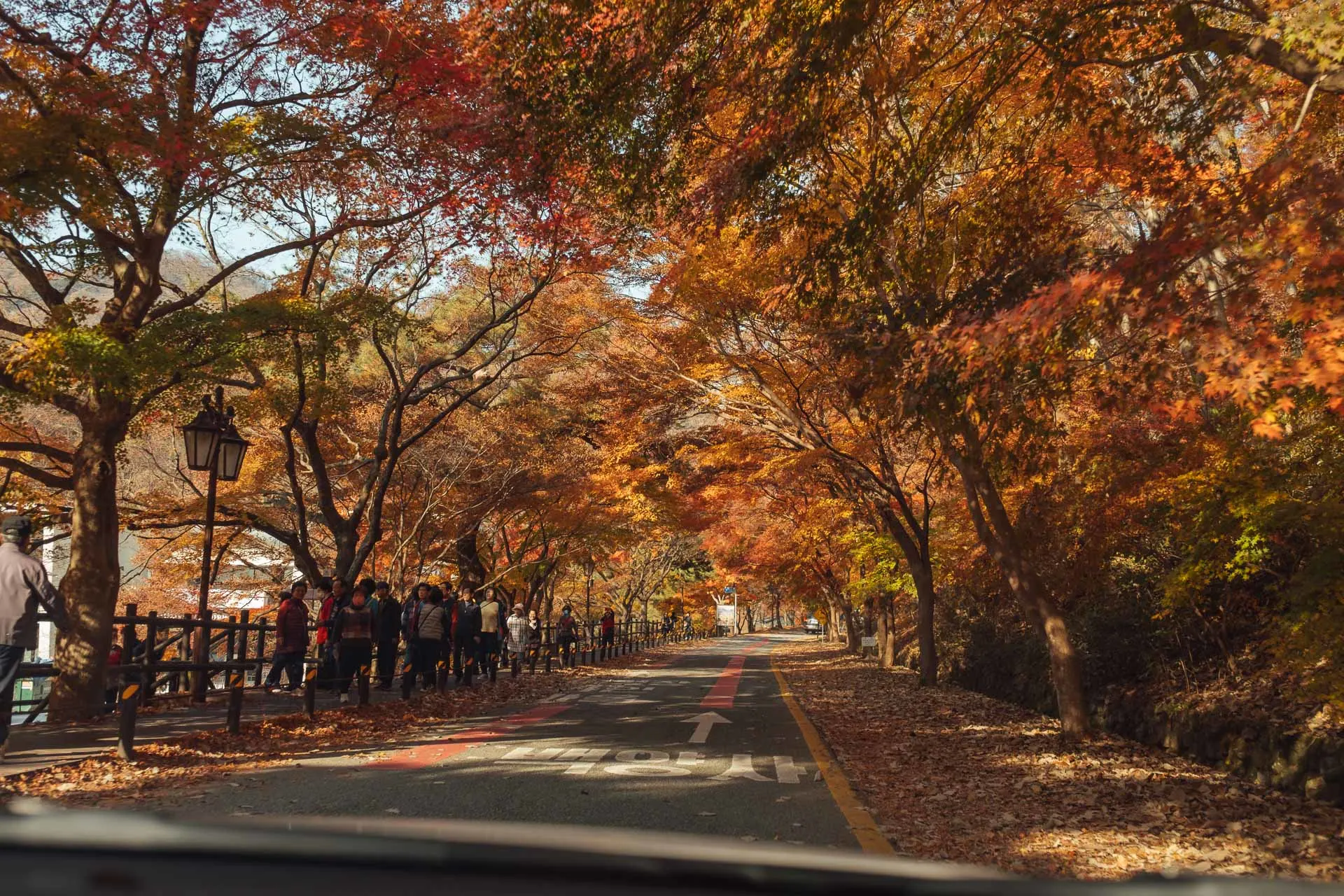
Spring destinations in South Korea
In spring, South Korea is simply magical. With its cherry blossoms, mild weather and plentiful events, there are plenty of experiences to enjoy here during this season. Check out the Jinhae Gunhangje Festival or the Yeouido Cherry Blossom Festival in Seoul – both great spots for taking in the breathtaking beauty of the cherry blossoms. Also make sure to visit one of South Korea’s many cultural sites such as Bulguksa Temple and Gyeongju National Museum. And don’t forget about Changdeokgung Palace and Namsan Park in Seoul, plus Haeundae Beach in Busan too! Spring is an amazing time to explore South Korea – take advantage of all its beauty!
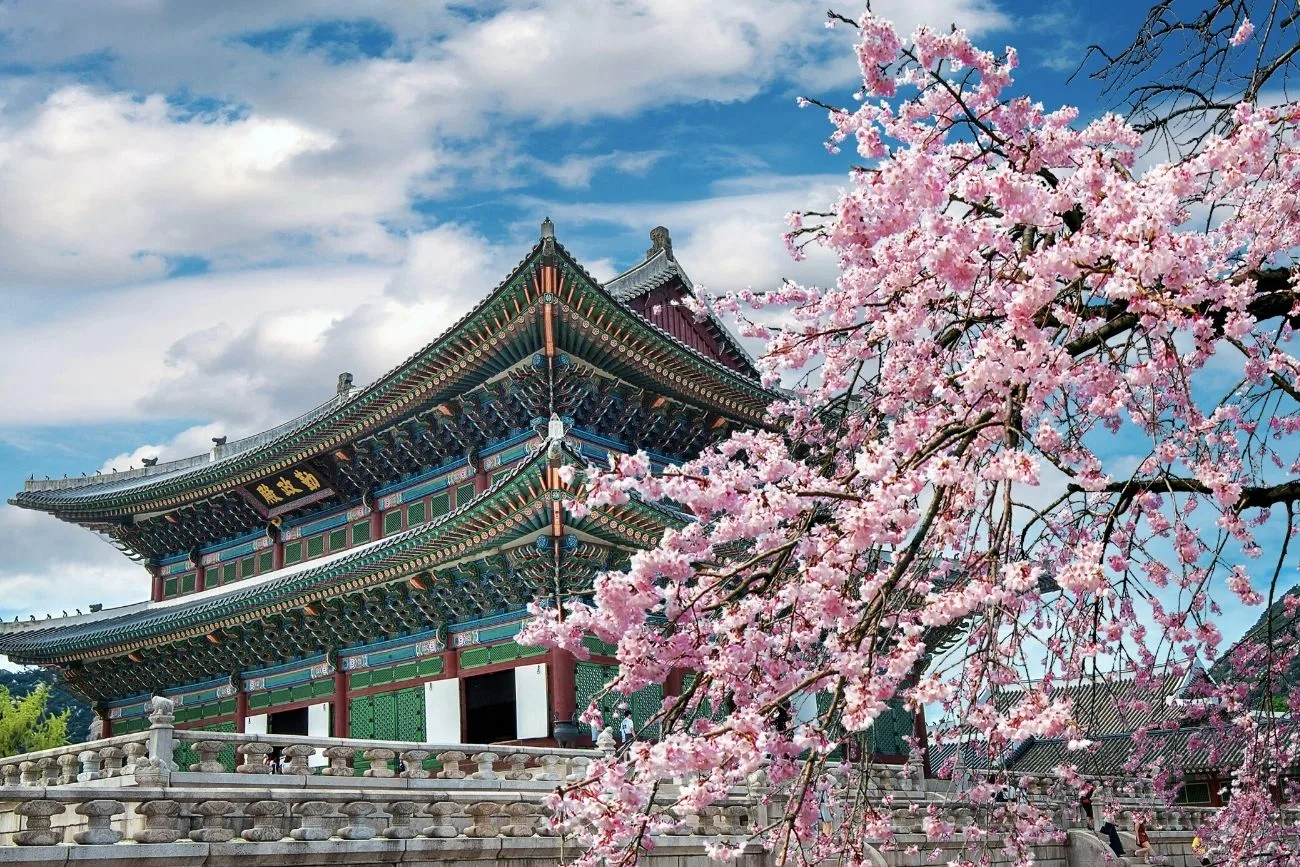
I hope this article made it a little clearer on driving in Korea as a tourist. If you have any questions, then ask below in the comments!







Keya
Wednesday 14th of February 2024
Hello, can you give more clarity on how to apply for an International Driving Permit? I can't seem to find a clear website on how to do this as a US Citizen. A link or a helpful guide would be amazing!
Elizabeth
Thursday 3rd of October 2024
@Keya, You just need to go to AAA. You don't need to be a member to get the IDP. It costs around $10.
Sia
Wednesday 28th of February 2024
Hi! I am not a US citizen so I don't know how to do it there, unfortunately. Good luck!